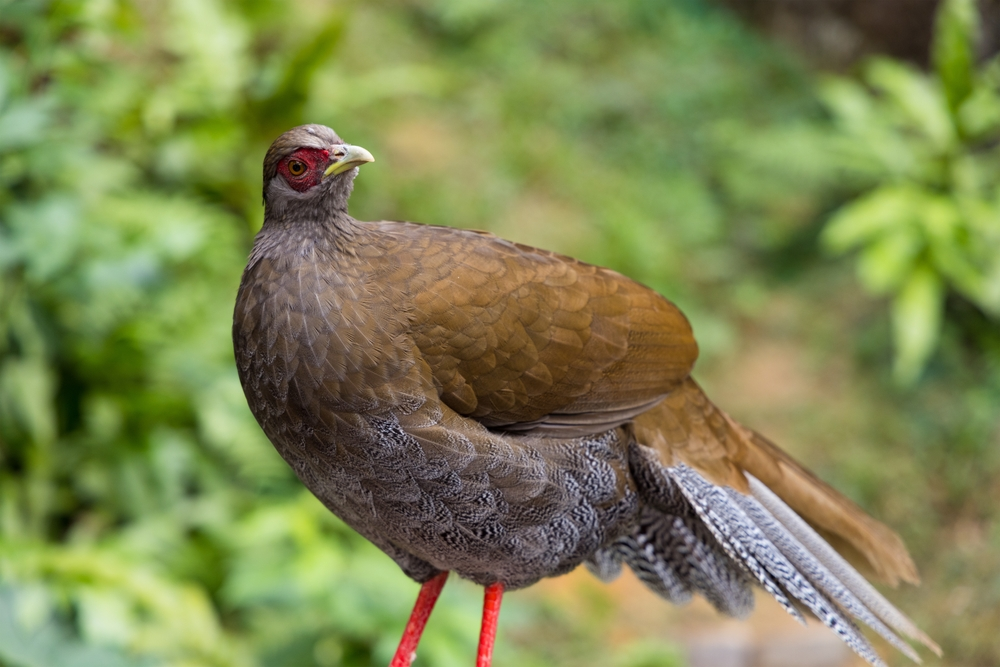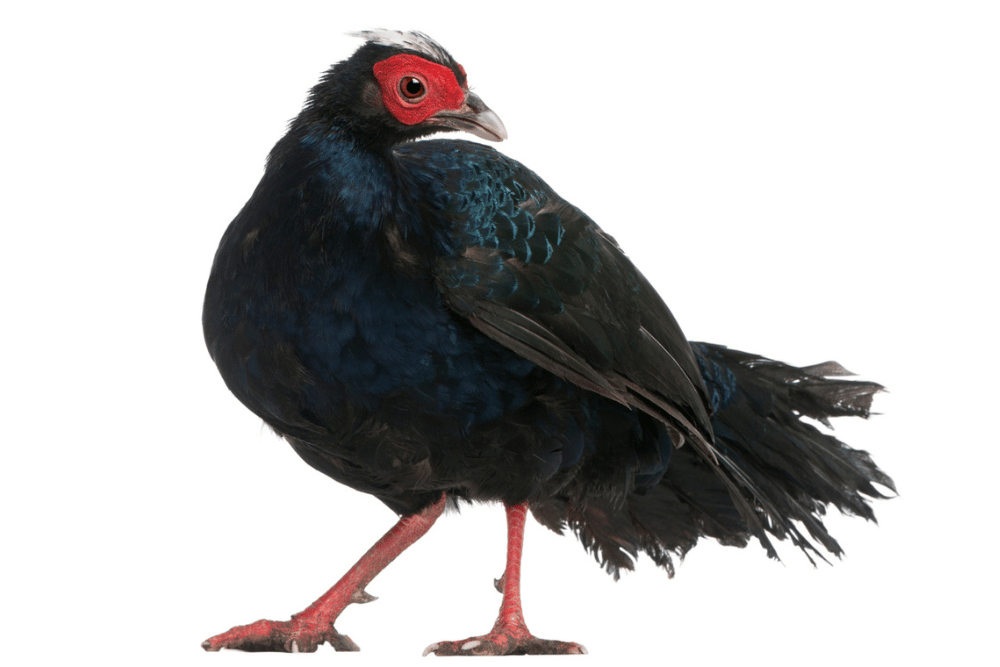
Vietnamese Pheasants can reach lengths of 22-25.5 inches and weigh slightly over 2 pounds, with males typically being larger than females.
Males exhibit an eye-catching pattern of dark and lighter blue hues across their bodies, which resembles a scaled texture. Their heads and tails feature a striking splash of white (although the tail is not always white), adding to their distinct appearance. Additionally, they have vibrant red wattles on each side of their faces, further enhancing their visual appeal.
In contrast, female Vietnamese Pheasants display more subdued brown coloration, yet they still possess the scaled pattern found in males. Their tails exhibit a bluish tint and may also display a touch of white similar to their male counterparts. Females also have the characteristic red wattles on each side of their faces, as well as red legs, giving them a unique and attractive appearance despite their more muted colors.
The Vietnamese Pheasant, as indicated by its name, is native to Vietnam. However, their population experienced a significant decline following the Vietnam War and subsequent agricultural expansion in the region. The last known sighting of a Vietnamese Pheasant in the wild occurred in 2000. Currently, efforts to conserve and maintain their population are focused on the Kẻ Gỗ Nature Reserve in Hà Tĩnh Province.
Within the Kẻ Gỗ Nature Reserve, Vietnamese Pheasants favor closed-canopy or evergreen forests characterized by dense vegetation. These habitats provide the birds with essential cover from predators, ample foraging opportunities, and suitable nesting sites. The preservation of such natural environments is crucial for the survival and potential recovery of the Vietnamese Pheasant population. Conservation efforts, including habitat restoration and breeding programs, may be instrumental in ensuring the long-term viability of this unique and beautiful bird species.
While there is limited information available on the behavior of Vietnamese Pheasants in the wild, it is reasonable to assume that their diet resembles that of other pheasant species. As omnivorous birds, they consume a diverse range of foraged foods, including seeds, berries, leaves, worms, termites, and other insects. Their diet may also consist of small vertebrates and various plant materials.
Vietnamese Pheasants are known to engage in scratching and pecking behaviors on the ground, which helps them uncover hidden food sources. They actively forage throughout the day, searching for nourishment in the dense vegetation of their preferred habitats. By maintaining a balanced diet, these birds ensure they receive the necessary nutrients for their growth, reproduction, and overall well-being.
Scientists hypothesize that the Vietnamese Pheasant, based on the behavioral patterns observed in related species, forages primarily during the early morning and late afternoon. These time periods are typically when the birds are most active, allowing them to efficiently search for food while minimizing exposure to predators.

See more at
CritterFacts:



